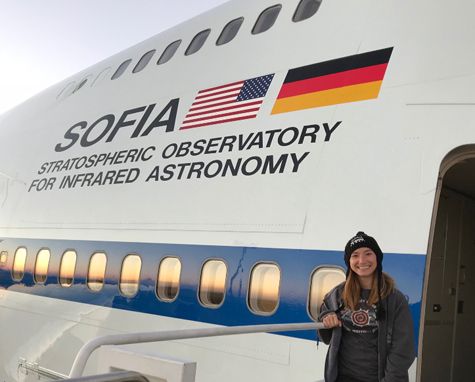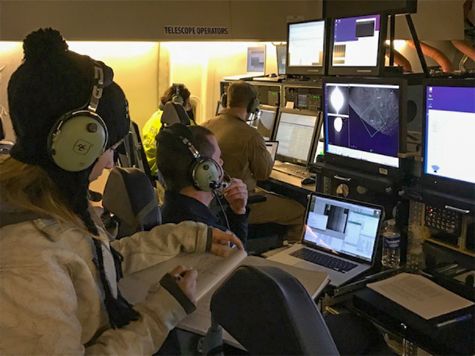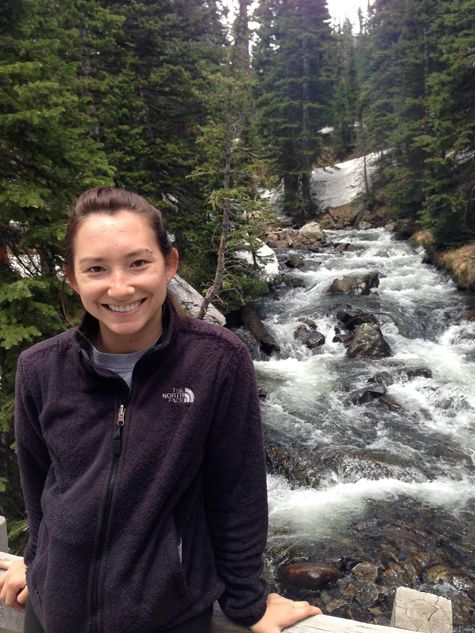Early Career Scientist Spotlight
Dr. Casey Honniball
Lunar Scientist
Planetary Geology, Geophysics & Geochemistry Lab
What is your research focus?
My research focuses on understanding water on the surface of the Moon. Prior to 2008, the Moon was believed to be dry. However, within the last decade, the understanding of hydration on the Moon has undergone a major shift. We now know that the Moon hosts various forms of hydration on the surface and interior in the form of hydrogen (H), hydroxyl (OH), and water (H2O). My goal is to understand how water and hydroxyl behave on the Moon. I am trying to answer questions like: Does water migrate across the surface of the Moon and potentially supply water to the polar regions? What is the distribution of water and hydroxyl across the surface of the Moon? What are the abundances of water and are there locations on the Moon that may be concentrating it?
To answer these questions and characterize the behavior of water, I use Earth-based telescopes to look for water and hydroxyls chemical fingerprints. I use the NASA InfraRed Telescope Facility (IRTF) in Hawai’i to measure the amount of total water (water plus hydroxyl) on the Moon, map its distribution, and observe how the total water changes with temperature. I also use the NASA Stratospheric Observatory For Infrared Astronomy (SOFIA) telescope. This telescope is unique as it is a modified Boeing 747 that flies above commercial airliners to make its observations. I use SOFIA to independently measure the amount of water on the Moon without the confusion of hydroxyl. With SOFIA, my graduate advisor Dr. Paul Lucey and I were able to make the first ever observation of a water-only fingerprint on the Moon. I continue to use both the IRTF and SOFIA to provide a better understanding of hydration across the lunar surface.

Credit: Dr. Paul Lucey
Did you always know that you wanted to be a lunar scientist?
No, actually. When I was in the first grade I was diagnosed with dyslexia and had to repeat the first grade. I struggled with reading and writing and had to be tutored for many years to overcome my learning difference. During most of my primary and secondary schooling, I was more interested in the performing arts. I enjoyed dancing, singing, cheerleading, acting, and modeling. I, along with my parents, thought I would end up in some sort of performing arts (my parents thought it would be the circus). It wasn’t until I was a Junior in high school that I found that I liked science and wanted to pursue it as a career. I took a physics class and that was the beginning of wanting to be a scientist. It wasn’t until I was in graduate school that I figured out I wanted to be a lunar scientist, though.
What is one space mission that you are particularly excited about, and why?
I am excited for the NASA VIPER (Volatiles Investigating Polar Exploration Rover) mission that should be delivered to the surface of the Moon in late 2023! VIPER is a lunar rover that will search for water ice and other potential resources. I am excited about this mission because it can provide a critical link between my remote observations of the Moon to measurements conducted on the ground and collected samples. This mission will help advance my research field by providing ground truth measurements for Earth-based and space-based telescopes to compare hydration abundances and distributions too.
Tell us about one project that has been particularly impactful in your field.
My most recent publication has had a large impact in lunar science. My graduate advisor Dr. Paul Lucey and I made the first direct detection of water on the Moon without any confusion from hydroxyl. This is an important observation because prior to it we weren’t sure if the hydration signatures we observed before were water or if it was purely hydroxyl. Now that we know water can exist on the Moon, it has implications for dynamic processes occurring on the Moon and also for future human exploration.

Credit: Dr. Paul Lucey
What early career advice do you have for those looking to do what you do?
I think the most important part about finding a career in general is to find what you’re passionate about. Participate in activities that are focused on your passion. If that’s lunar science or research in general, get involved in a research group that does the science you’re interested in. Don’t be afraid to introduce yourself to someone that is doing that research.
What do you like to do in your free time?
I like to do many things. During the winter (or COVID scenarios), I like to work on puzzles and cross stitch. During the summer I like to go out and hike or go scuba diving, if I have access to do so. Right now, I am spending my time volunteering at a farm and working with the horses and taking riding lessons, teaching myself to play piano, and working out.
What are your future research interests and goals?
Right now, I focus on lunar water, but I am working to expand to other volatiles to make a comprehensive understanding of volatiles on the lunar surface. I am also working to expand to other planetary bodies through the work I do on the Moon by using the Moon as an analog for other airless bodies. I would also like to be involved is missions like VIPER to begin connecting remote observations to ground-based measurements and samples. This will allow me to develop a better understanding of remote sensing data and improve methods so that the remote sensing observations match what will be found when an astronaut steps foot on the surface of the Moon and collects a sample.

Credit: NASA LRO/Casey Honniball
Biography
Home Town:
Reno, NV
Undergraduate Degree:
B.S. in Astronomy, University of Arizona, Tucson, AZ
Post-graduate Degrees:
Ph.D. in Earth and Planetary Science, University of Hawai’i at Mānoa, Honolulu, HI

Link to Dr. Honniball's GSFC Bio
